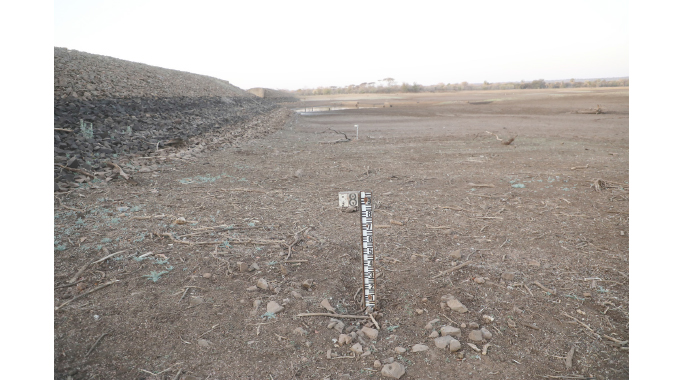Tshongogwe Dam dries up

Sikhumbuzo Moyo, Senior Reporter
TSHONGOGWE Irrigation Scheme in Jotsholo, Kusile District in Matabeleland North is facing viability challenges as a result of the drying up of Tshongogwe Dam which has resulted in the reduction of the planted hectarage from 18 hectares to just two.
The dam is the irrigation scheme’s source of water.
The El Nino-induced cyclone that hit the country more than a decade ago as well as uncontrolled farming on the dam’s banks has been blamed for Tshongogwe’s Dam siltation.
Crops that were planted depend on drip irrigation from two boreholes that were installed three years ago by a consortium of non-governmental orgarnisations under the name Sizimisele that invested US$29 000.
The two boreholes were sunk at a cost of US$10 000 with US$13 000 being spent on a solar system and pumping unit while US$6 000 was used on drip installation.
Sizimisele is a consortium of 11 organisations funded through the Zimbabwe Resilience Building Fund (ZRBF) which is co-managed by the United Nations Development Fund and the Government.
Tshongogwe Irrigation Scheme was established in 1966.
Initially it had 16 members and the number went up to 62 but due to low yields, some people have since pulled out leaving 50 members.
In an interview with Chronicle, irrigation scheme manager Mr Michael Ngwenya said they were gravely worried about what lies ahead.

United Nations Development Fund
He said the irrigation scheme’s future is bleak as the two boreholes were not enough for them to be fully operational.
“We have a farming area that covers 18 hectares where we were planting throughout the year. During January, we would be into horticulture through planting crops like tomatoes, cabbages, carrots, sugar beans, onions and later in the year we would be into cereals such as wheat but all that is no longer the case due to water challenges after Tshongogwe Dam dried up,” said Mr Ngwenya.
He said right now they have butternut planted on 1,8 hectares with 0,05 hectares having cabbages, a far cry from what they usually plant.
“We are not expecting to harvest anything from wheat because rains went before the crop could mature and now with no steady and constant water supplies our hopes of a harvest are all but diminishing with each passing day, said Mr Ngwenya.
A villager, Ms Petronella Ndlovu said the mushrooming of smallholder market gardens around the dam and unsupervised farming methods had a huge effect on the drying up of the dam which will see a number of families and livestock that relied on the dam for drinking, being affected.
“As you can see the dam is full of mud now which makes it hard to hold on to water. Villagers too are contributing to siltation through farming within the vicinity of the dam. At this rate I don’t see that irrigation scheme remaining operational for long and even if it does, production will be extremely low,” said Ms Ndlovu.
Government recently launched Umfolo/Makandiwa soil and water conservation blitz which encourages farmers to have contour ridges on both arable and non-arable land to minimise soil degradation and protect huge water bodies like dams from drying up through siltation.
The soil and water conservation blitz is part of Government’s Agriculture and Food Systems Transformation Strategy that seeks to achieve an US$8,5 billion agriculture economy by 2025 and is based on the realisation that as part of a trajectory of attaining Vision 2030, improving agriculture production and productivity for the attainment of national and household food and nutrition security remained top priority for the Second Republic. – @skhumoyo2000.








Comments